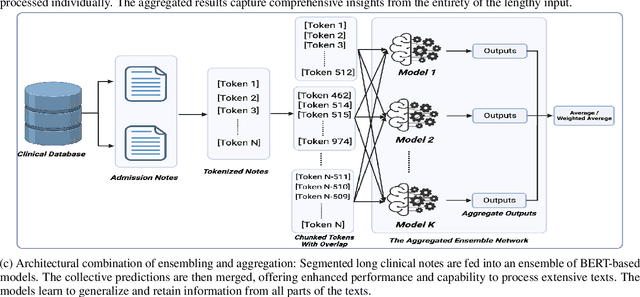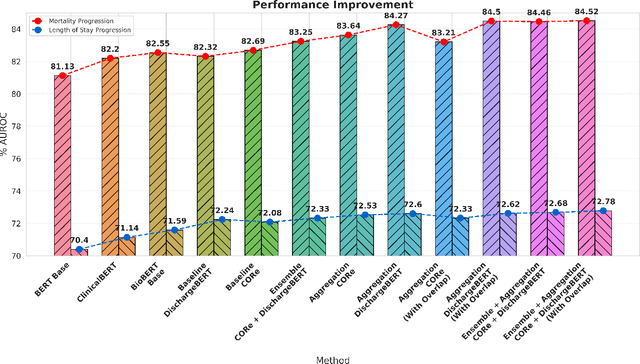Mohammad Ashrafuzzaman Khan
BanglaEmbed: Efficient Sentence Embedding Models for a Low-Resource Language Using Cross-Lingual Distillation Techniques
Nov 22, 2024



Abstract:Sentence-level embedding is essential for various tasks that require understanding natural language. Many studies have explored such embeddings for high-resource languages like English. However, low-resource languages like Bengali (a language spoken by almost two hundred and thirty million people) are still under-explored. This work introduces two lightweight sentence transformers for the Bangla language, leveraging a novel cross-lingual knowledge distillation approach. This method distills knowledge from a pre-trained, high-performing English sentence transformer. Proposed models are evaluated across multiple downstream tasks, including paraphrase detection, semantic textual similarity (STS), and Bangla hate speech detection. The new method consistently outperformed existing Bangla sentence transformers. Moreover, the lightweight architecture and shorter inference time make the models highly suitable for deployment in resource-constrained environments, making them valuable for practical NLP applications in low-resource languages.
Automatic Differential Diagnosis using Transformer-Based Multi-Label Sequence Classification
Aug 28, 2024



Abstract:As the field of artificial intelligence progresses, assistive technologies are becoming more widely used across all industries. The healthcare industry is no different, with numerous studies being done to develop assistive tools for healthcare professionals. Automatic diagnostic systems are one such beneficial tool that can assist with a variety of tasks, including collecting patient information, analyzing test results, and diagnosing patients. However, the idea of developing systems that can provide a differential diagnosis has been largely overlooked in most of these research studies. In this study, we propose a transformer-based approach for providing differential diagnoses based on a patient's age, sex, medical history, and symptoms. We use the DDXPlus dataset, which provides differential diagnosis information for patients based on 49 disease types. Firstly, we propose a method to process the tabular patient data from the dataset and engineer them into patient reports to make them suitable for our research. In addition, we introduce two data modification modules to diversify the training data and consequently improve the robustness of the models. We approach the task as a multi-label classification problem and conduct extensive experiments using four transformer models. All the models displayed promising results by achieving over 97% F1 score on the held-out test set. Moreover, we design additional behavioral tests to get a broader understanding of the models. In particular, for one of our test cases, we prepared a custom test set of 100 samples with the assistance of a doctor. The results on the custom set showed that our proposed data modification modules improved the model's generalization capabilities. We hope our findings will provide future researchers with valuable insights and inspire them to develop reliable systems for automatic differential diagnosis.
Preserving the knowledge of long clinical texts using aggregated ensembles of large language models
Nov 02, 2023



Abstract:Clinical texts, such as admission notes, discharge summaries, and progress notes, contain rich and valuable information that can be used for various clinical outcome prediction tasks. However, applying large language models, such as BERT-based models, to clinical texts poses two major challenges: the limitation of input length and the diversity of data sources. This paper proposes a novel method to preserve the knowledge of long clinical texts using aggregated ensembles of large language models. Unlike previous studies which use model ensembling or text aggregation methods separately, we combine ensemble learning with text aggregation and train multiple large language models on two clinical outcome tasks: mortality prediction and length of stay prediction. We show that our method can achieve better results than baselines, ensembling, and aggregation individually, and can improve the performance of large language models while handling long inputs and diverse datasets. We conduct extensive experiments on the admission notes from the MIMIC-III clinical database by combining multiple unstructured and high-dimensional datasets, demonstrating our method's effectiveness and superiority over existing approaches. We also provide a comprehensive analysis and discussion of our results, highlighting our method's applications and limitations for future research in the domain of clinical healthcare. The results and analysis of this study is supportive of our method assisting in clinical healthcare systems by enabling clinical decision-making with robust performance overcoming the challenges of long text inputs and varied datasets.
A Comparative Study on Approaches to Acoustic Scene Classification using CNNs
Apr 26, 2022



Abstract:Acoustic scene classification is a process of characterizing and classifying the environments from sound recordings. The first step is to generate features (representations) from the recorded sound and then classify the background environments. However, different kinds of representations have dramatic effects on the accuracy of the classification. In this paper, we explored the three such representations on classification accuracy using neural networks. We investigated the spectrograms, MFCCs, and embeddings representations using different CNN networks and autoencoders. Our dataset consists of sounds from three settings of indoors and outdoors environments - thus the dataset contains sound from six different kinds of environments. We found that the spectrogram representation has the highest classification accuracy while MFCC has the lowest classification accuracy. We reported our findings, insights as well as some guidelines to achieve better accuracy for environment classification using sounds.
* Presented at 2021 Mexican International Conference on Artificial Intelligence. Published in Advances in Computational Intelligence, MICAI 2021, Lecture Notes in Computer Science. 12 pages, 3 figures, 5 tables
 Add to Chrome
Add to Chrome Add to Firefox
Add to Firefox Add to Edge
Add to Edge